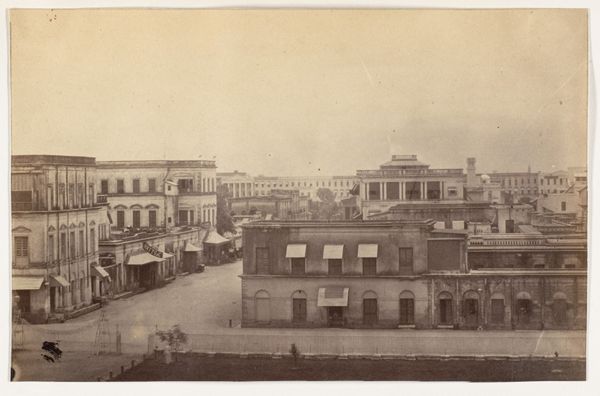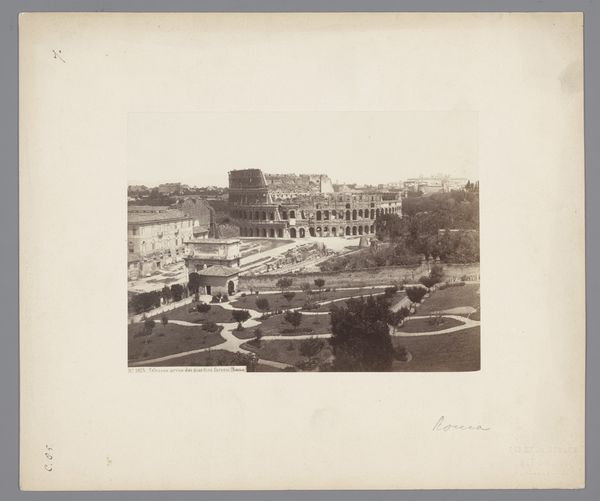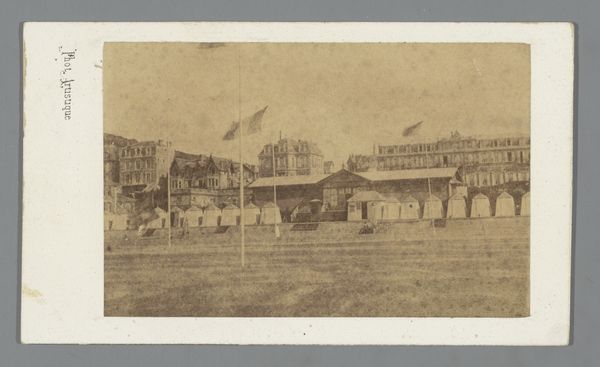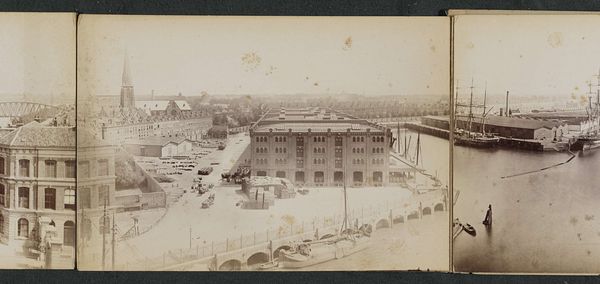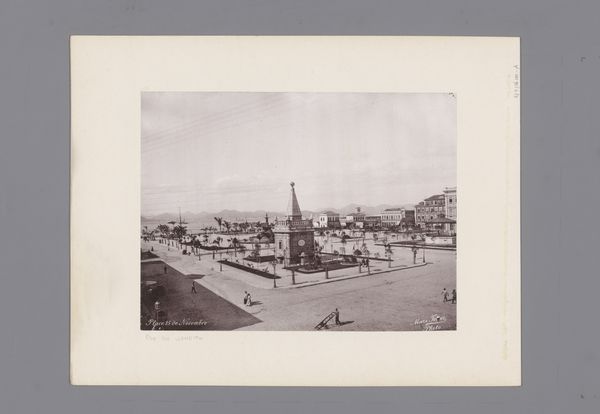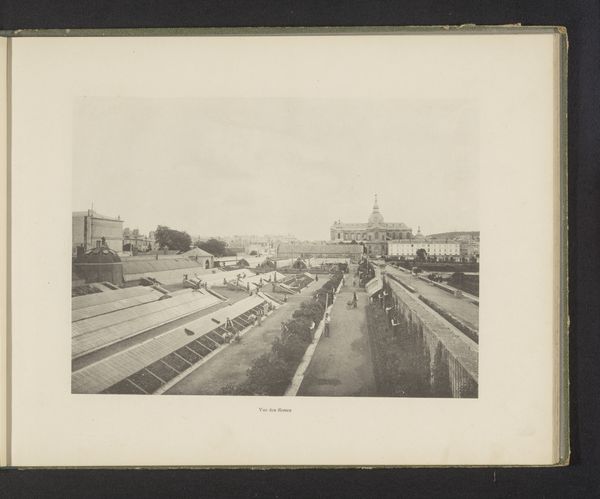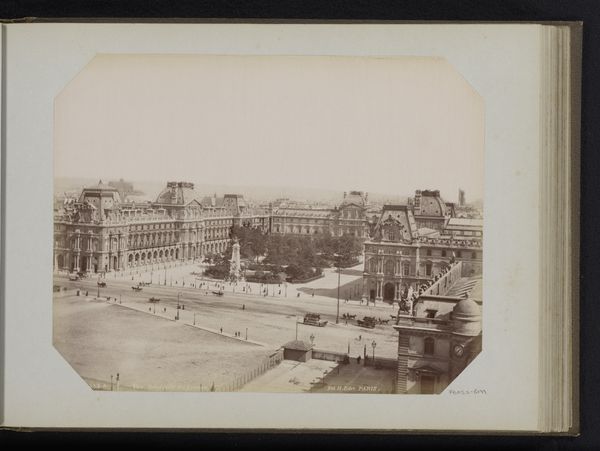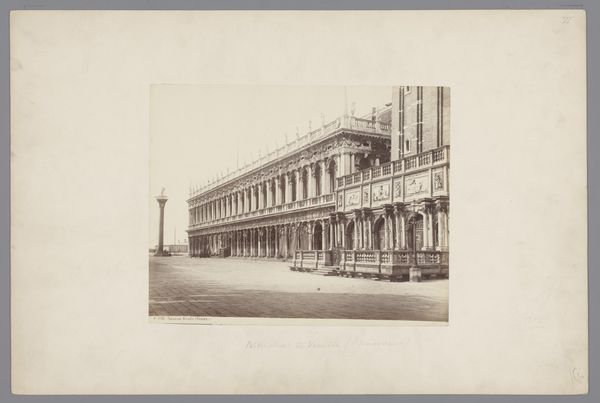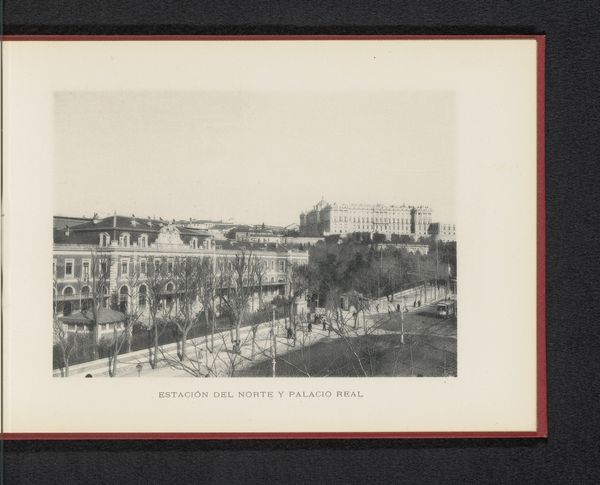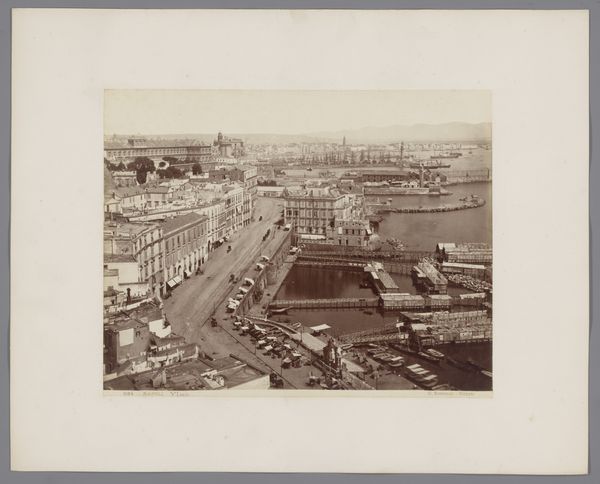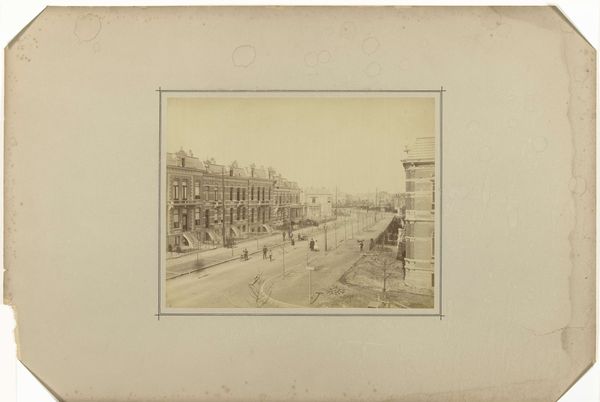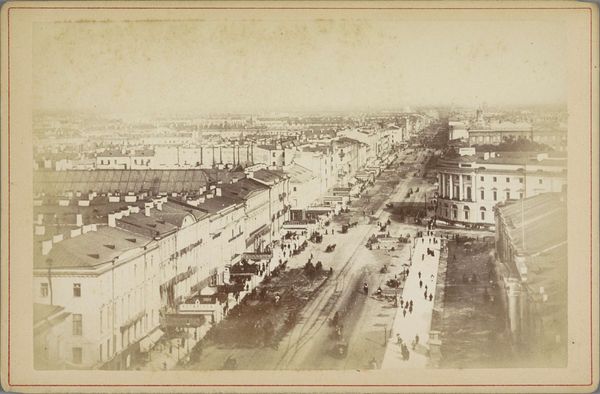
photography, gelatin-silver-print
#
16_19th-century
#
landscape
#
street-photography
#
photography
#
orientalism
#
gelatin-silver-print
#
street
Dimensions: height 228 mm, width 290 mm, height 367 mm, width 415 mm
Copyright: Rijks Museum: Open Domain
Editor: This is Samuel Bourne’s gelatin-silver print, "Straatgezicht te Kolkata," taken sometime between 1863 and 1867. It feels so meticulously composed, almost staged. What kind of stories do you think this photograph tells? Curator: I see layers of meaning embedded within this seemingly straightforward street scene. The image itself operates as a symbol of British presence in India, doesn't it? Bourne, as a British photographer, is framing a specific view of Kolkata, highlighting the colonial architecture and order. Editor: The presence of horse-drawn carriages and European-style buildings definitely reinforces that idea. How does that relate to its time period? Curator: The mid-19th century was a time of expanding colonial influence and burgeoning photographic technology. This image freezes a moment of that era, reflecting the aspirations and, perhaps unintentionally, the impositions of colonial power. Notice the framing; it is not just a depiction, it's a constructed reality meant to project control and civilization. Editor: So the image, by its very existence, carries this baggage of colonialism? Curator: Precisely. And consider the light, the sharp focus on details...all contribute to this sense of curated order. The street, the buildings, even the people, are presented in a way that emphasizes a particular narrative. The symbols point towards something constructed. Editor: That makes me look at it completely differently. I was so focused on the aesthetic composition before. Curator: Photography from this period often served as a tool for documentation and propaganda. Bourne's work is no exception. By unpacking its visual language, we can reveal some pretty interesting social and cultural contexts. Editor: That's fascinating. I'll never look at a photograph from this period in the same way. Thank you!
Comments
No comments
Be the first to comment and join the conversation on the ultimate creative platform.
